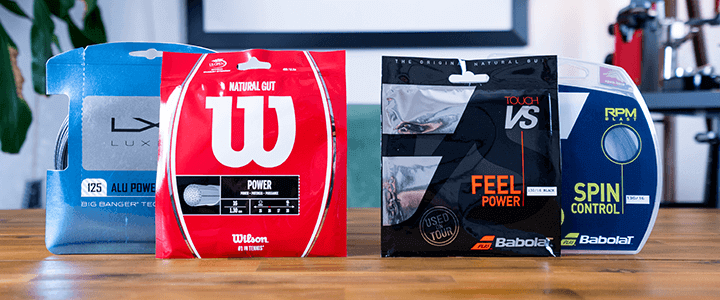
After benchmarking every Fire TV model ever released last week and posting the results, several of you asked for a similar post comparing Android TV devices. Now that the new 2020 Chromecast with Google TV has arrived, here’s a benchmark comparison of the Chromecast, two generations of Nvidia Shield TVs, the Tivo Stream 4K, and the Mi Box (for good measure) compared to every Fire TV, Fire TV Stick, and Fire TV Cube model.
As I do with all of my benchmark articles, I must remind you that benchmark results are absolutely not a good representation of how these devices will perform in real-world everyday use. A streaming device that scores twice as much on a benchmark as another device will not give you an experience that is twice as good as the weaker device. That said, it’s still good to know how these devices compare when they are pushed to their absolute limits, which is what benchmarks show us, even if those limits are rarely ever reached in actual use.
Just as with when I benchmarked Fire TVs last week, all of these scores are newly tested runs on the device’s latest software version. Each benchmark was run 3 times per device and the top 2 runs were averaged to give the final value that you see listed below. I’ve omitted the AnTuTu and 3DMark benchmarks, which I included for my Fire TV comparison, because those same tests would not run successfully across all the Android TV devices in this comparison.

Geekbench is a great all-around benchmark for the processing (CPU) capabilities of these devices. While still not a good representation of video streaming performance, it’s probably the closest benchmark available to show how these devices will perform while launching apps and navigating around their interfaces. Still king in raw power is the 2017 Nvidia Shield TV 2, followed closely by the 2nd-gen Fire TV Cube and the cylindrical 2019 Shield TV 3. I’m sorry that I don’t have a 2019 Shield TV Pro to include in the comparison, but I’m confident that it would score just slightly above everything else. I suspect that the older 2017 Shield TV 2 scored higher than the new one because, like the 2019 Shield TV Pro, it runs a 64-bit operating system and has 3GB of RAM, while the 2019 Shield TV 3 has a 32-bit OS and 2GB of RAM.
Coming in at the top of the budget-friendly devices is the 2020 Chromecast, which does run Android TV despite the Google TV rebranding and new interface. This is surely thanks to its 1.9GHz CPU versus the 1.7 GHz CPU shared by the Fire TV Stick 4K, Fire TV Stick 3, and Fire TV Stick Lite. With about 14% more raw power than its dongle/stick competition, it’s not going to blow away Amazon’s Firesticks or the Tivo Stream 4K in every-day tasks, but it still takes the crown for sub-$50 devices.
It’s worth noting that the Tivo Stream 4K, with its 1.8 GHz CPU, should be outperforming the Fire TV Sticks as well, as is evident by its higher single-core score, but something is holding back Tivo’s multi-score core. My guess is that its buggy software, which has always been my biggest complaint about the device, is adding unnecessary overhead that robs away performance. The Tivo Stream 4K should come in right under the Chromecast, especially because both devices have 2GB of RAM, but it seems to be falling short of its CPU’s peak potential in this benchmark.

As for gaming (GPU) performance, which is what the next benchmark, GFXBench, measures, it’s not even close when the Shield TV is included. Nvidia’s bread and butter is graphics and it shows through with nearly 4 times the gaming performance as the next closest device, the Fire TV Cube 2. It’s just a shame that, unless you’re heavily using the Shield TV for gaming, most of that raw power goes to waste when it comes to everyday tasks. Despite having 1GB less RAM and a 32-bit OS, the Shield TV 3 outperforms the Shield TV 2 in this benchmark because the GPU in its slightly improved Tegra X1+ processor is clocked at 1.267 GHz, while the older model uses the Tegra X1 that has a GPU clocked at 1 GHz. Once again, I’m confident that the 2019 Shield TV Pro would perform slightly above the 2019 Shield TV.
As for the budget-friendly devices, none of them are really designed for gaming, but the 2020 Chromecast once again edges ahead of the Firesticks and the Tivo Stream 4K, so it should be able to squeeze out just a few more frames-per-second in games than the other sub-$50 devices on the list. While the Tivo Stream 4K uses the same Mali-G31 GPU as the Chromecast, there is once again something holding it back from where I’d expect it to be.
When it comes to raw CPU power, Android TV devices edge ahead of Fire TV devices in both flagship (>$100) and budget (<$50) categories. However, gaming aside, the difference isn't so great to choose one device over the other based on benchmark performance alone. When the performance of 2 devices are within 10-15% of each other at their absolute limits, as we're seeing with these benchmarks, the software optimization and the UX choices play a much more important roll in how they'll perform in daily streaming tasks than their hardware does.
Source: https://www.aftvnews.com/android-tv-benchmarks-compared-to-every-fire-tv-2020-chromecast-shield-tv-tivo-stream-4k-and-mii-box/




